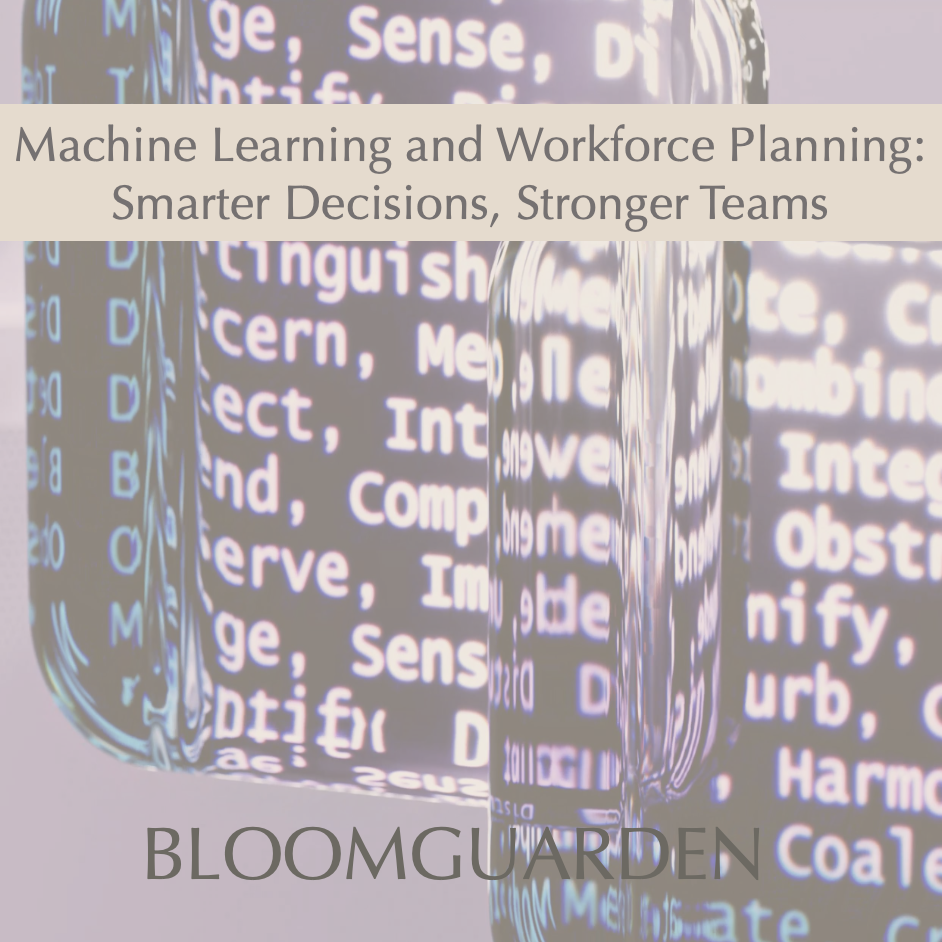Machine Learning and Workforce Planning: Smarter Decisions, Stronger Teams
Workforce planning has always been about balance: the right number of people, with the right skills, at the right time. But today, that balance is harder to strike. Labor markets are volatile, skill needs are shifting faster than job titles, and leadership teams are under pressure to do more with less.
That’s why HR and business leaders are turning to machine learning (ML). Unlike traditional forecasting, ML enables data-driven, dynamic workforce planning—one that adapts in real time and supports smarter, more strategic decisions.
This article explores how ML is changing workforce planning today, what HR leaders need to know to use it effectively, and how to move beyond static headcount models toward responsive, risk-aware talent strategies.
Why Workforce Planning Needs an Upgrade
Traditional workforce planning methods rely on historical data, manager input, and spreadsheets—none of which account for:
· Sudden shifts in product strategy or funding
· Skills gaps hiding behind inflated titles
· Project-based resourcing across business units
· Geographic cost pressures or remote expansion
· The speed of M&A integrations or restructures
Machine learning offers an alternative: adaptive forecasting that continuously improves as more data becomes available.
What Machine Learning Brings to Workforce Planning
1. Pattern Detection in Workforce Behavior
ML can detect patterns in turnover, mobility, or absenteeism—before they show up in lagging indicators.
2. Smarter Demand Forecasting
ML models help predict talent needs across teams and locations based on historical projects, financial forecasts, and execution trends.
3. Skills-Based Scenario Modeling
ML identifies hidden or adjacent skills and maps them to projected needs—supporting build/buy/borrow decisions.
4. Compensation and Attrition Risk Insight
ML surfaces pay and mobility-related attrition risk across key segments, helping HR act before disengagement sets in.
5. Integration with Real-Time Business Data
When connected with sales or operations data, ML translates business milestones into headcount and capability needs—automatically.
Use Cases in Action
M&A Integration Planning
A PE-backed firm used ML to simulate workforce overlaps and attrition risk across acquired teams—informing day-one talent decisions and targeted retention.
Retail Headcount Flexing
A major grocery multi-location employer used ML to align store labor needs with market data and demand signals—cutting overtime by 18% over one holiday season.
Internal Mobility Optimization
A tech company used ML-enabled skills mapping to fill 40% of stretch roles with internal candidates—reducing time-to-fill and increasing engagement.
What to Watch For
· Garbage in, garbage out: ML requires clean, structured, and current data.
· Opaque logic: Avoid tools that don’t show how predictions are made.
· Privacy and ethics: Communicate clearly with employees about how data is used.
· Overreliance: ML supports judgment; it doesn’t replace it.
Getting Started
1. Start with a business question (not a dashboard): Where do you need better visibility or faster forecasting?
2. Assess your data readiness: Can you trust your current HRIS, skills, and comp data?
3. Pilot and refine: Run a contained ML use case in one unit or region and iterate.
4. Train leaders to interpret results: Machine learning is only useful if the right people can act on the insight.
Conclusion
Machine learning isn’t just a tool—it’s a strategy enabler. For companies navigating complexity, ML-enabled workforce planning offers more than efficiency. It provides foresight, helping HR leaders anticipate change, mitigate risk, and drive growth with clarity.
References
· McKinsey & Company. (2023). The Critical Role of Strategic Workforce Planning in the Age of AI.
· IBM. (2023). Watsonx HR Agents: Accelerating HR Modernization with AI‑Powered Workforce Insights.
· SHRM. (2024). What HR Professionals Must Know About AI‑Powered Analytics.
· World Economic Forum. (2025). Building a Responsible, AI‑Ready Workforce for the Future.
· Harvard Business Review. (2022). Where AI Can—and Can’t—Help Talent Management.
How BloomGuarden Can Help
At BloomGuarden, we equip HR leaders with tools and frameworks to turn workforce planning into a strategic advantage. Our forthcoming BloomBots™ Workforce Simulator uses machine learning to map skills, model future headcount needs, and test workforce scenarios across growth, restructuring, and M&A.
To request early access or learn more about how we support PE-backed and mid-market teams, email contact@bloomguarden.com
